Table of Contents

Synthetic Fibres and Plastics
The clothes which we wear are made of fabrics. Fabrics are made from fibres obtained from natural or artificial sources. Can you name some natural fibres? Fibres are also used for making a large variety of household articles. Make a list of some common articles made from fibres. Try to separate them into those made from natural fibres and those made from artificial fibres. Make entries in Table 3.1.
Table 3.1 : Natural and Artificial Fibres

Why did you label some fibres as artificial?
You have read in your previous classes that natural fibres like cotton, wool, silk, etc., are obtained from plants or animals. The synthetic fibres, on the other hand, are made by human beings. That is why these are called synthetic or man-made fibres.
3.1 What are Synthetic Fibres?
Try to recall the uniform pattern found in a necklace of beads joined with the help of a thread [Fig. 3.1(a)]. Or, try to join a number of paper clips together to make a long chain, as in Fig. 3.1 (b). Is there any similarity between the two?
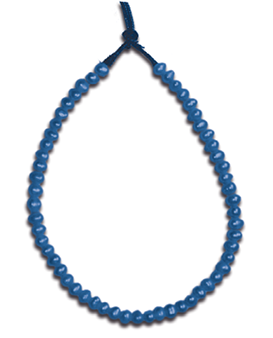
(a)
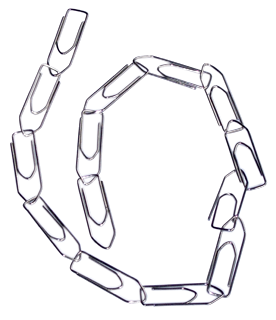
(b)
Fig. 3.1 : (a) Beads and (b) Paper clips joined to form long chains
A synthetic fibre is also a chain of small units joined together. Each small unit is actually a chemical substance. Many such small units combine to form a large single unit called a polymer. The word ‘polymer’ comes from two Greek words; poly meaning many and mer meaning part/unit. So, a polymer is made of many repeating units.
Polymers occur in nature also. Cotton, for example, is a polymer called cellulose. Cellulose is made up of a large number of glucose units.
3.2 Types of Synthetic Fibres
Rayon
You have read in Class VII that silk fibre obtained from silkworm was discovered in China and was kept as a closely guarded secret for a long time. Fabric obtained from silk fibre was very costly. But its beautiful texture fascinated everybody. Attempts were made to make silk artificially. Towards the end of the nineteenth century, scientists were successful in obtaining a fibre having properties similar to that of silk. Such a fibre was obtained by chemical treatment of wood pulp. This fibre was called rayon or artificial silk. Although rayon is obtained from a natural source, wood pulp, yet it is a man-made fibre. It is cheaper than silk and can be woven like silk fibres. It can also be dyed in a wide variety of colours. Rayon is mixed with cotton to make bed sheets or mixed with wool to make carpets. (Fig. 3.2.)
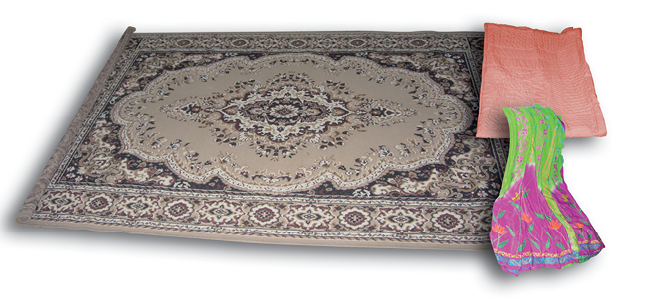
Fig. 3.2 : Articles made of rayon
Nylon
Nylon is another man-made fibre. In 1931, it was made without using any natural raw material (from plant or animal). It was prepared from coal, water and air. It was the first fully synthetic fibre.
Nylon fibre was strong, elastic and light. It was lustrous and easy to wash. So, it became very popular for making clothes.

We use many articles made from nylon, such as socks, ropes, tents, toothbrushes, car seat belts, sleeping bags, curtains, etc. (Fig. 3.3).

Nylon is also used for making parachutes and ropes for rock climbing (Fig. 3.4). A nylon thread is actually stronger than a steel wire.
Is nylon fibre really so strong that we can make nylon parachutes and ropes for rock climbing?
Let us find out.
Activity 3.1
Take an iron stand with a clamp. Take a cotton thread of about 60 cm length. Tie it to the clamp so that it hangs freely from it as shown in Fig. 3.5. At the free end suspend a pan so that weight can be placed in it.
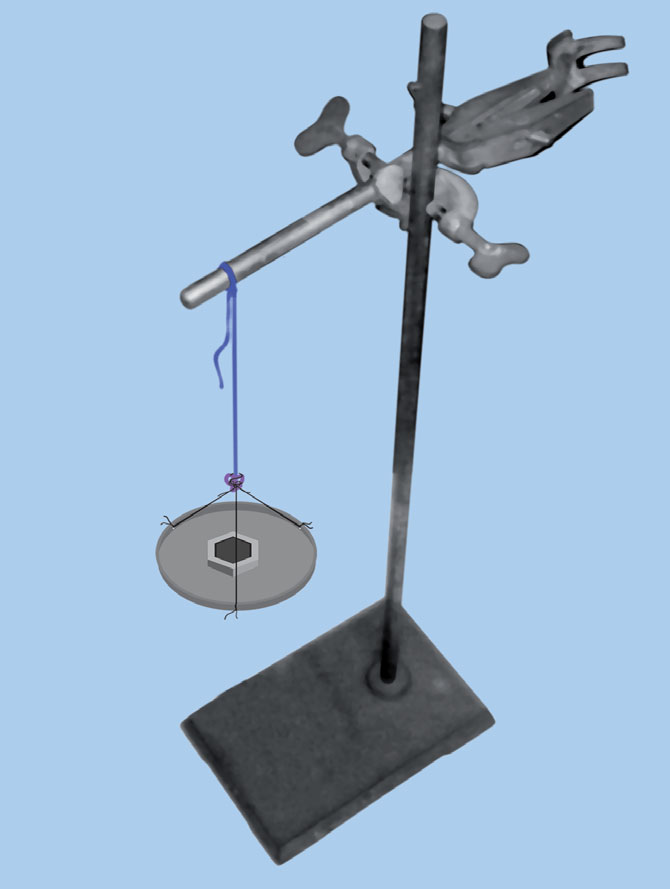
Fig.3.5 An iron stand with a thread hanging from the clamp
Add weight one by one till the thread breaks. Note down the total weight required to break the thread. This weight indicates the strength of the fibre. Repeat the same activity with threads of wool, polyester, silk and nylon. Tabulate the data as shown in Table 3.2. Arrange the threads in order of their increasing strength.
Observation Table 3.2

You may use a hook or a nail on the wall for hanging the fibres and a polythene bag at the other end. In place of weights you may
use marbles (or pebbles) of
similar size.
Precaution : Note that all threads should be of the same length and almost of the same thickness.
Polyester and Acrylic
Polyester is another synthetic fibre. Fabric made from this fibre does not get wrinkled easily. It remains crisp and is easy to wash. So, it is quite suitable for making dress material. You must have seen people wearing polyester shirts and other dresses. Terylene is a popular polyester. It can be drawn into very fine fibres that can be woven like any other yarn.
My mother always buys PET bottles and PET jars for storing rice and sugar. I wonder what PET is!
PET (polyethylene terephthalate) is a very familiar form of polyester. It is used for making bottles, utensils, films, wires and many other useful products.
Look around and make a list of things made of polyester
Polyester (Poly+ester) is actually made up of the repeating units of a chemical called an ester. Esters are the chemicals which give fruits their smell. Fabrics aresold by names like polycot, polywool, terrycot, etc. As the name suggests, these are made by mixing two types of fibres. Polycot is a mixture of polyester and cotton. Polywool is a mixture of polyester and wool.
We wear sweaters and use shawls or blankets in the winter. Many of these are actually not made from natural wool, though they appear to resemble wool. These are prepared from another type of synthetic fibre called acrylic. The wool obtained from natural sources is quite expensive, whereas clothes made from acrylic are relatively cheap. They are available in a variety of colours. Synthetic fibres are
more durable and affordable which makes them more popular than natural fibres.
You have already performed an activity of burning natural and synthetic fibres (Activity 3.6 of Class VII). What did you observe? When you burn synthetic fibres you find that their behaviour is different from that of the natural fibres. You must have noticed that synthetic fibres melt on heating. This is actually a disadvantage of synthetic fibres. If the clothes catch fire, it can be disastrous. The fabric melts and sticks to the body of the person wearing it. We should, therefore, not wear synthetic clothes while working in in the kitchen or in a laboratory.

Oh! Now I understand why my mother never wears polyester clothes while working in the kitchen.
All the synthetic fibres are prepared by a number of processes using raw materials of petroleum origin, called petrochemicals.
3.3 Characteristics of Synthetic Fibres
Imagine that it is a rainy day. What kind of umbrella would you use and why? Synthetic fibres possess unique characteristics which make them popular dress materials. They dry up quickly, are durable, less expensive, readily available and easy to maintain. Perform the following activity and learn for yourself.
Activity 3.2
Take two cloth pieces of the same size, roughly half a metre square each. One of these should be from natural fibre. The other could be a synthetic fibre. You can take help of your parents in selecting these pieces. Soak the pieces in different mugs each containing the same amount of water. Take the pieces out of the containers after five minutes and spread them in the sun for a few minutes. Compare the volume of the water remaining in each container.
Do synthetic fabrics soak less/more water than the natural fabrics? Do they take less/more time to dry?
What does this activity tell you about the characteristics of the synthetic fabrics?
Find out from your parents about the durability, cost and maintenance of these fabrics, compared to the natural fabrics.
3.4 Plastics
You must be familiar with many plastic articles used everyday. Make a list of such items and their uses.
Plastic is also a polymer like the synthetic fibre. All plastics do not have the same type of arrangement of units.

Fig. 3.6 : (a) Linear (b) Cross-linked arrangements
In some it is linear, whereas in others it is cross-linked. (Fig. 3.6). Plastic articles are available in all possible shapes and sizes as you can see in Fig. 3.7. Have you ever wondered how this is possible? The fact is that plastic is easily mouldable i.e. can be shaped in any form. Plastic can be recycled, reused, coloured, melted, rolled into sheets or made into wires. That is why it finds such a variety of uses.
Polythene (Poly+ethene) is an example of a plastic. It is used for making commonly used polythene bags.
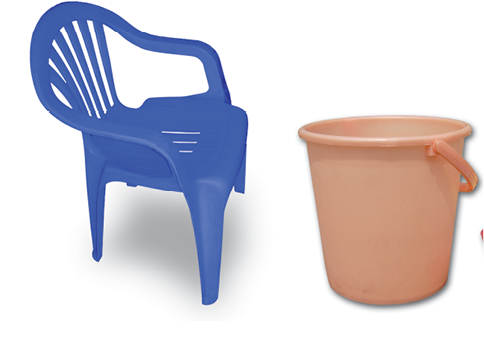
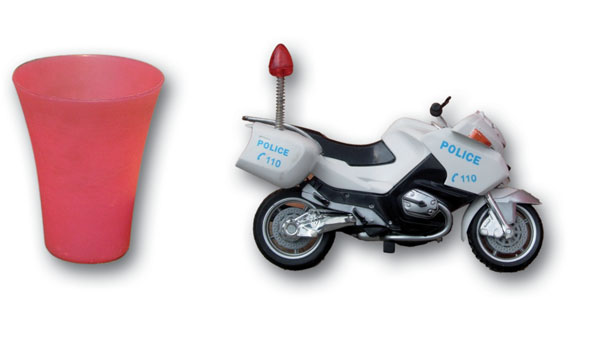
Fig. 3.7 : Various articles made of plastics
Now, try to bend a piece of plastic yourself. Can all the plastic articles be bent easily?
You will observe that some plastic articles can bend easily while some break when forced to bend. When we add hot water to a plastic bottle, it gets deformed. Such plastic which gets deformed easily on heating and can be bent easily are known as thermoplastics. Polythene and PVC are some of the examples of thermoplastics. These are used for manufacturing toys, combs and various types of containers.
On the other hand, there are some plastics which when moulded once, can not be softened by heating. These are called thermosetting plastics. Two examples are bakelite and melamine. Bakelite is a poor conductor of heat and electricity. It is used for making electrical switches, handles of various utensils, etc. Melamine is a versatile material. It resists fire and can tolerate heat better than other plastics. It is used for making floor tiles, kitchenware and fabrics which resist fire. Fig. 3.8 shows the various uses of thermoplastics and thermosetting plastics.

Fig. 3.8 : Some articles made of plastic
3.5 Plastics as Materials of Choice
Today if we think of storing a food item, water, milk, pickles, dry food etc., plastic containers seem most convenient. This is because of their light weight, lower price, good strength and easy handling. Being lighter as compared to metals, plastics are used in cars, aircrafts and spacecrafts, too. The list is endless if we start counting articles like slippers, furniture, decoration pieces, etc.
Now, let us discuss the characteristic properties of plastics.
Plastic is Non-reactive
You know that metals like iron get rusted when left exposed to moisture and air. But plastics do not react with water and air. They are not corroded easily. That is why they are used to store various kinds of material, including many chemicals.
Plastic is Light, Strong and Durable
Talk to your parents or grandparents about the types of buckets that were used in the past. What is the material of the buckets or mugs you are using today? What are the advantages of using a plastic container? Since plastic is very light, strong, durable and can be moulded into different shapes and sizes, it is used for various purposes. Plastics are generally cheaper than metals. They are widely used in industry and for household articles. Make a list of different kinds of plastic containers that you use in daily life.
Plastics are Poor Conductors
You have learnt above that plastics are poor conductors of heat and electricity. That is why electrical wires have plastic covering, and handles of screw drivers are made of plastic. As mentioned above, handles of frying pans are also made
of plastic.
Did You Know?
Plastics find extensive use in the healthcare industry. Some examples of their use are the packaging of tablets, threads used for stitching wounds, syringes, doctors’ gloves and a number of medical instruments.
Special plastic cookware is used in microwave ovens for cooking food. In microwave ovens, the heat cooks the food but does not affect the plastic vessel.
Teflon is a special plastic on which oil and water do not stick. It is used for non-stick coating on cookwares.
Fire-proof plastics: Although synthetic fibre catches fire easily, it is interesting to know that the uniforms of firemen have coating of melamine plastic to make them flame resistant.
3.6 Plastics and the Environment
When we go to the market, we usually get things wrapped in plastic or packed in polythene bags. That is one reason why plastic waste keeps getting accumulated in our homes. Ultimately, plastic finds its way to the garbage. Disposal of plastic is a major problem. Why?
A material which gets decomposed through natural processes, such as action by bacteria, is called biodegradable. A material which is not easily decomposed by natural processes is termed non-biodegradable.
Look at Table 3.3.
Table 3.3

Since plastic takes several years to decompose, it is not environment friendly. It causes environmental pollution. Besides, the burning process in the synthetic material is quite slow and it does not get completely burnt easily. In the process it releases lots of poisonous fumes into the atmosphere causing air pollution. How can this problem be solved?
Avoid the use of plastics as far as possible. Make use of bags made of cotton or jute when you go for shopping. The biodegradable and non-biodegradable wastes should be collected separately and disposed off separately. Practise this in your homes. Can you suggest some other ways in which you can contribute towards reducing the use of plastic materials?
It is better to recycle plastic waste. Most of the thermoplastics can be recycled. Make a list of items that can be recycled. However, during recycling certain colouring agents are added. This limits its usage especially for storage of food.
As a responsible citizen remember the 5 R principle. Reduce, Reuse, Recycle, Recover and Refuse. Develop habits which are environment friendly.
Have you ever seen a garbage dump where animals are eating garbage? In the process of eating the food waste they swallow materials like polythene bags and wrappers of food. Can you imagine the consequences? The plastic material chokes the respiratory system of these animals, or forms a lining in their stomachs and can be the cause of their death.
The polybags carelessly thrown here and there are responsible for clogging the drains, too. Sometimes we are very careless and throw the wrappers of chips, biscuits and other eatables on the road or in parks or picnic places. Should we not think twice before doing so ? As a responsible citizen what measures do you suggest to keep public places clean and free of plastic?
Fibre-wise
Do not throw plastic bags in the water bodies or on the road.
Take a cotton carry bag or a jute bag while going for shopping.
Try to minimise the use of plastic materials e.g., use a steel lunch box instead of a plastic one.
Keywords
acrylic
artificial silk
nylon
plastic
Polyester
polymer
polythene
rayon
synthetic fibres
terylene
thermoplastics
thermosetting plastics
What you have learnt
Synthetic fibres and plastics, like natural fibres, are made of very large units called polymers. Polymers are made up of many smaller units.
While natural fibres are obtained from plants and animals, synthetic fibres are obtained by chemical processing of petrochemicals. Like natural fibres, these fibres can also be woven into fabrics.
Synthetic fibres find uses ranging from
many household articles like ropes,
buckets, furniture, containers, etc., to highly specialised uses in aircrafts, ships, spacecrafts, healthcare, etc. Depending upon the types of chemicals used for manufacturing synthetic fibres, they are called Rayon, Nylon, Polyester and Acrylic.
The different types of fibres differ from one another in their strength, water absorbing capacity, nature of burning, cost, durability etc.
Today, life without plastics cannot be imagined. Be it home, or outside, plastic is everywhere.
The waste created by plastics is not environment friendly. On burning, plastics release poisonous gases. On dumping in the ground they may take years to degenerate. This is because of their non-biodegradable nature.
We need to use synthetic fibres and plastics in such a manner that we can enjoy their good qualities and at the same time minimise the environmental hazards for the living communities.
Exercises
1. Explain why some fibres are called synthetic.
2. Mark ( ) the correct answer.
Rayon is different from synthetic fibres because
(a) it has a silk-like appearance.
(b) it is obtained from wood pulp.
(c) its fibres can also be woven like those of natural fibres.
3. Fill in the blanks with appropriate words.
(a) Synthetic fibres are also called __________ or __________ fibres.
(b) Synthetic fibres are synthesised from raw material called __________ .
(c) Like synthetic fibres, plastic is also a __________ .
4. Give examples which indicate that nylon fibres are very strong.
5. Explain why plastic containers are favoured for storing food.
6. Explain the difference between thermoplastic and thermosetting plastics.
7. Explain why the following are made of thermosetting plastics.
(a) Saucepan handles
(b) Electric plugs/switches/plug boards
8. Categorise the materials of the following products into ‘can be recycled’ and ‘cannot be recycled’.
Telephone instruments, plastic toys, cooker handles, carry bags, ball point pens, plastic bowls, plastic covering on electrical wires, plastic chairs, electrical switches.
9. Rana wants to buy shirts for summer. Should he buy cotton shirts or shirts made from synthetic material? Advise Rana, giving your reason.
10. Give examples to show that plastics are noncorrosive in nature.
11. Should the handle and bristles of a tooth brush be made of the same material? Explain your answer.
12. ‘Avoid plastics as far as possible’. Comment on this advice.
13. Match the terms of column A correctly with the phrases given in
column B.
A B
(i) Polyester (a) Prepared by using wood pulp
(ii) Teflon (b) Used for making parachutes and stockings
(iii) Rayon (c) Used to make non-stick cookwares
(iv) Nylon (d) Fabrics do not wrinkle easily
14. ‘Manufacturing synthetic fibres is actually helping conservation of forests’. Comment.
15. Describe an activity to show that thermoplastic is a poor conductor of electricity.
Extended Learning — Activities and Projects
1. Have you heard of the campaign : ‘‘Say No To Plastics”. Coin a few more slogans of this kind. There are certain governmental and non-governmental organisations who educate the general public on how to make wise use of plastics and develop environment friendly habits. Find out organisations in your area which are carrying out awareness programmes. If there is none, form one.
2. Organise a debate in the school. Children may be given an option to role play as manufacturers of synthetic fabrics or those of fabrics from natural sources. They can then debate on the topic ‘My Fabric is Superior’.
3. Visit five families in your neighbourhood and enquire about the kind of clothes they use, the reason for their choice and advantages of using them in terms of cost, durability and maintenance. Make a short report and submit it to your teacher.
4. Devise an activity to show that organic waste is biodegradable while plastic is not.
Did You Know?
Nylon appears like silk. It is strong and flexible. These endearing qualities of nylon created a public sensation, or nylon mania, when it was introduced in 1939. Women’s stockings made from this new fibre were in great demand. But, unfortunately, most of the nylon production had to be diverted to making parachutes during the Second World War (1939-1945). After the war, when production of stockings resumed, supply did not match the demand. There was a huge black market for this product. Women had to wait for hours in queues to get a pair. Often there were nylon riots.
E x e r c i s e s
